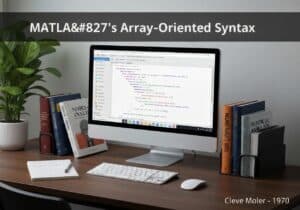To validate the loops within a program.
- Méthodologies : Clients et marketing, Résolution de problèmes
Test en boucle

Test en boucle
- Amélioration continue, Assurance qualité, Contrôle de qualité, Ingénierie logicielle, Software Testing, Méthodes d'essai, Validation, Vérification
Objectif :
Comment il est utilisé :
- A white-box testing technique that focuses exclusively on the validity of loop constructs. Test cases are designed to check for correct initialization, execution, and termination of simple, concatenated, and nested loops.
Avantages
- Identifies bugs related to loops, such as infinite loops or incorrect termination; Ensures that loops perform as expected.
Inconvénients
- Can be redundant if other white-box testing techniques are already in use; May not find all types of bugs.
Catégories :
- Ingénierie, Qualité
Idéal pour :
- Testing software components with complex loops, such as algorithms for data processing or scientific computing.
Within the realm of software testing and engineering, Loop Testing is particularly applicable in sectors that rely heavily on data processing, such as finance, telecommunications, and bioinformatics. In these industries, algorithms often involve intricate loop constructs that are fundamental for tasks like data analysis, real-time processing, or simulation of biological systems. Loop Testing is typically initiated during the development phase, especially when iterating through data structures or performing operations that depend on iterative processes. Participants in this methodology usually include software developers, quality assurance testers, and system architects, who collaborate to create targeted test cases that assess different types of loops, such as simple loops that iterate a set number of times, nested loops that process multi-dimensional data, and concatenated loops that execute in sequence. Such collaborative efforts yield significant benefits, as bugs related to loop constructs, like infinite loops or incorrect conditions for loop termination, can drastically affect the performance and reliability of software systems. The methodology contributes to robust software development practices, reducing potential runtime errors by ensuring every iteration behaves as expected under diverse conditions, which in turn leads to enhanced quality and confidence in software deliverables. Loop Testing enables teams to focus their testing efforts on crucial moments in algorithms, ensuring that the operational flow holds true even under edge cases or extreme data scenarios, thus mitigating risks associated with software failures in production environments.
Principales étapes de cette méthodologie
- Identify all loop constructs in the code, including simple, concatenated, and nested loops.
- Design test cases that validate loop initialization, ensuring variables are set correctly before execution.
- Create test cases to assess loop execution, verifying that all iterations occur as intended.
- Develop test cases for loop termination, confirming that loops exit under proper conditions.
- Execute tests to observe behavior, focusing on detecting infinite loops and premature exits.
- Analyze outcomes to ensure loops function correctly and meet performance expectations.
Conseils de pro
- Utilize path testing within loop testing to ensure alternate execution routes are verified, especially in nested loops.
- Monitor variable states throughout iterations to catch anomalies in loop behavior, ensuring robustness against off-by-one errors.
- Integrate automated tools that simulate boundary conditions and stress test loops under extreme scenarios for enhanced validation.
Lire et comparer plusieurs méthodologies, nous recommandons le
> Référentiel méthodologique étendu <
ainsi que plus de 400 autres méthodologies.
Vos commentaires sur cette méthodologie ou des informations supplémentaires sont les bienvenus sur le site web de la Commission européenne. section des commentaires ci-dessous ↓ , ainsi que toute idée ou lien en rapport avec l'ingénierie.
Contexte historique
1967
1970
1970
1980
1980
1980
1990
1967
1970
1970
1980
1980
1980
1990
1990
(si la date est inconnue ou non pertinente, par exemple « mécanique des fluides », une estimation arrondie de son émergence notable est fournie)















Articles Similaires
Simulation de Monte Carlo
Tests basés sur des modèles
Contrôle des modèles
Recherche sur les méthodes mixtes
À l'épreuve des erreurs (Poka-Yoke)
Test du profil de la mission